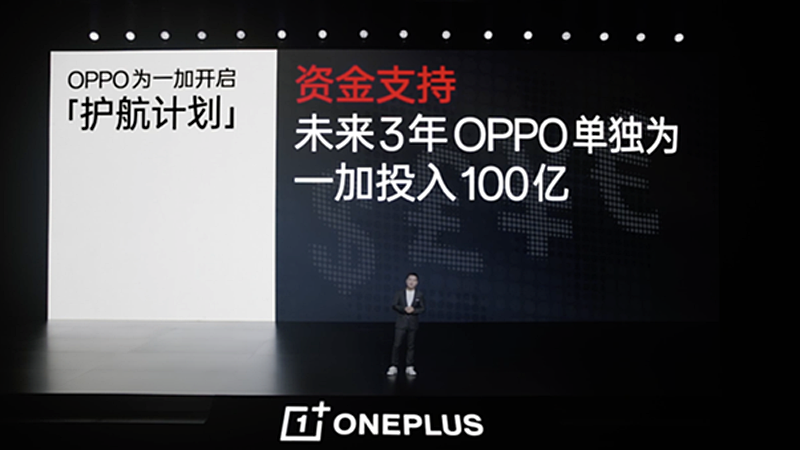Canalys Forums 2022 Expert Hubs: Into the breach
6 January 2023

Canalys’ view of the potential cannibalism between OPPO and OnePlus as OnePlus enters OPPO’s offline channel.
OPPO announced its merger with OnePlus in 2021, stating that OnePlus would remain focused on the online channel. But OnePlus announced its entrance into OPPO’s offline channel in mainland China in April 2022.
At first glance, this is good news for OnePlus and its customers. OnePlus would be able to improve its offline presence through 5,000 stores in OPPO’s widespread offline channels in mainland China. And consumers will get better after-sales service as OnePlus smartphones would be repaired in OPPO stores. But this move also means OnePlus smartphones will be displayed on the same counters as OPPO smartphones. So will this move cause cannibalism between the two brands?
From a branding perspective, OnePlus and OPPO are sufficiently differentiated from each other. Since the establishment of OnePlus, it has maintained a consistent image: a geeky brand that provides premium products at reasonable prices. But OPPO is a mid-range brand that emphasizes humanity and focuses on the mass market. At the same time, there is realme, the spun-off vendor using OPPO’s supply chain and global channel resources, targeting the younger generation with its fashionable designs. The three brands’ original channel strategies were originally designed around the different customer segments they were aiming at. OnePlus and realme focused on the online channel to cater to geeky and young audiences, more receptive to online purchases, while OPPO offered a wider portfolio with aggressive endorsements to attract offline customers. With OnePlus entering OPPO’s offline channel, it begs the question, are their value propositions different enough to avoid cannibalism?
To answer the question, we have to look further into the software and hardware. From the software point of view, the OnePlus and OPPO user interfaces are similar. OnePlus was using its own HydrogenOS back in 2021, which followed a material design similar to the stock Android. After merging with OPPO, OnePlus applied OPPO’s ColorOS for effective resource allocation. This move caused some complaints from OnePlus’ core users. But it also helped OnePlus gain a wider user base in China thanks to the localized features of ColorOS. At the same time, OnePlus still needs more exclusive features on ColorOS for its core users to differentiate it from OPPO. For example, more customizable options for CPU/GPU would be a plus for geek users.

When it comes to the hardware, OnePlus and OPPO are getting closer than ever as OPPO brought back the flagship Find series in 2018. If we compare the OnePlus 10 Pro with the OPPO Find X5 Pro, there is a lot in common.
|
Model |
OPPO Find X5 Pro |
OnePlus 10 Pro |
|
SoC |
Snapdragon 8 Gen1 |
Snapdragon 8 Gen1 |
|
Screen size |
6.7" |
6.7" |
|
Display technology |
AMOLED LTPO |
AMOLED LTPO |
|
Resolution |
3,216×1,440 |
3,216×1,440 |
|
Refresh rate |
120Hz |
120Hz |
|
Camera |
Quad camera |
Quad camera |
|
Primary camera (megapixels) |
50MP |
48MP |
|
RAM |
12GB |
8/12GB |
|
Storage |
256/512GB |
128/256/512GB |
|
Battery |
5,000mAh |
5,000mAh |
|
List price |
CNY6,299 (12+256) (US$915) |
CNY5,299 (12+256) (US$770) |
The specs of the two models are almost identical, despite the fact that the Find X5 Pro has a better camera system. The Hasselblad camera was once exclusive to the OnePlus 9 series, but now the Find series is also equipped with it, even the in-house MariSilicon X NPU to enhance image processing. The major hardware differentiator for OnePlus is the physical alert slider bar, which has been an iconic design for OnePlus flagships dating back to the OnePlus 2. But, overall, OnePlus needs a stronger differentiator in the flagship segment. At the same time, the OnePlus Ace series (a mid-range lineup available in mainland China) is a good example of how OnePlus can avoid cannibalism. It has the same list price as the OPPO Reno8 Pro for the same storage variant, but with a better SoC, which is attractive to heavy users, such as mobile gamers. On the other hand, the Reno8 Pro is equipped with a better front-facing camera, which attracts lightweight users who often want to post selfies on social media.

At the moment, OnePlus and OPPO are likely to cannibalize each other in the high-end segment, while overall shipments may increase due to OnePlus’ offline channel expansion. In the high-end segment, OnePlus’ lineup still lacks a key differentiator, which can be either better cooling systems and SoC tuning or exclusive software features. At OnePlus’ 9th Anniversary event, it also announced its strategy to focus on performance. With the CNY10 billion (US$1.4 billion) investment from OPPO, it is time for OnePlus to rethink its flagship lineup. Is it still a budget alternative to the Find series or a flagship that truly “never settles”?